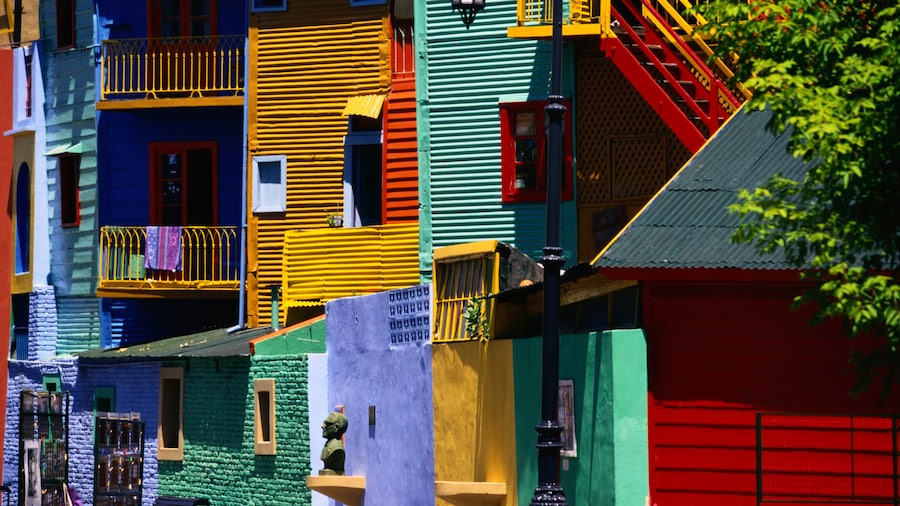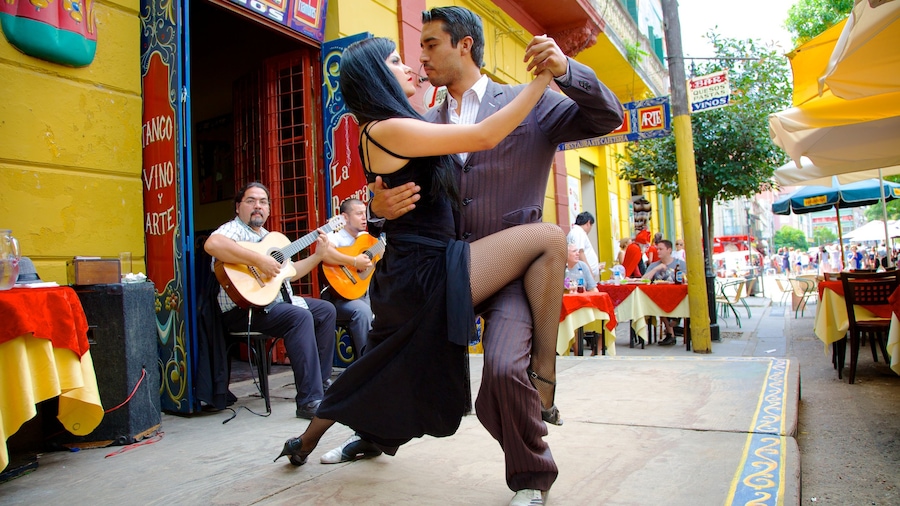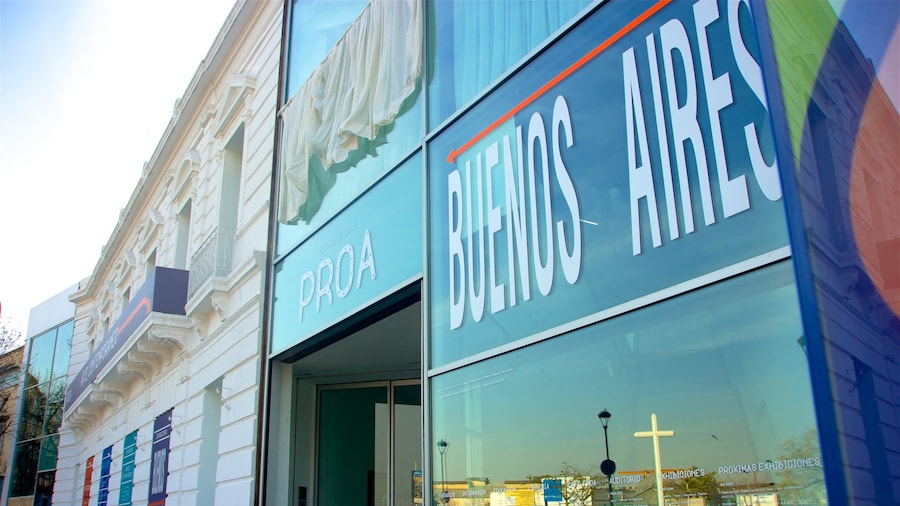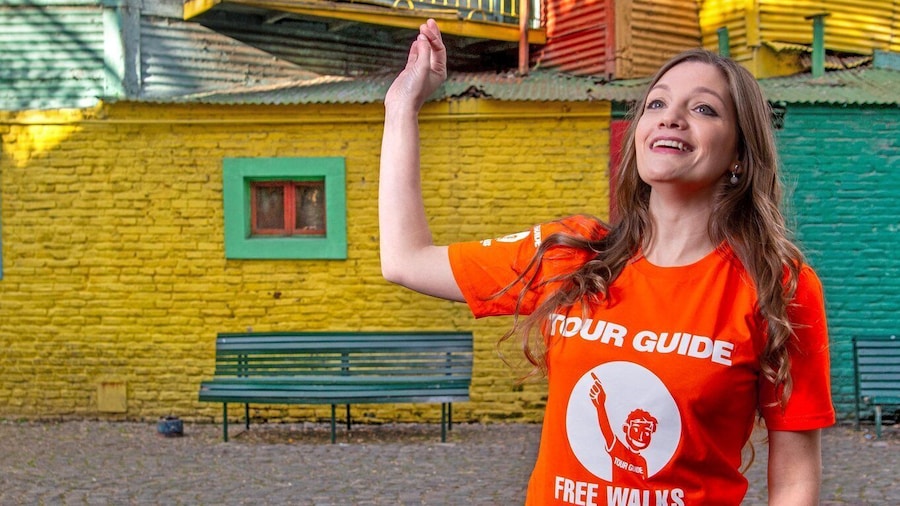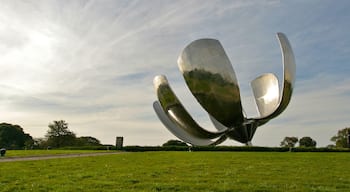Brightly colored merchant houses, modern museums, street art, tango shows and soccer make La Boca a must-see neighbourhood in Buenos Aires.
The port district of La Boca is one of Buenos Aires’ oldest and most iconic neighbourhoods. Its colourful history is preserved in “el Caminito,” a cobblestone street with a jumble of houses, cafés, galleries and souvenir shops. See large dolls representing the locals leaning over wrought-iron balconies. Watch tango dancers and street artists and visit the place where some of the nation’s biggest soccer stars started out.
La Boca’s style dates back to the 19th century when working-class immigrants settled here in “conventillos” (cramped boarding houses). They reputedly decorated the houses using a variety of paints found at the docks. To see what life was like here during that time, study the mural and sculptures by local artist Benito Quinquela Martín.
Wander through the streets and watch costumed couples perform the tango on street corners. Take a seat in a café for a “parrilla” (coal-fired barbecue meat). Juicy steaks, organs and blood sausages are all part of this national dish.
Visit the Fundación Proa Museum and Cultural Centre to see international contemporary art exhibitions. From its café, look out over the Plata River and docks. Don’t miss the curious Museo Histórico de Cera where wax sculptures depict scenes from Buenos Aires’ history.
Sports fans should tour La Bombonera, home of Boca Juniors. This is where soccer legends such as Maradona and Tevez were discovered. Join a guided tour and visit the stadium’s museum full of trophies, vintage sports tunics and homages to Diego Maradona. You can also see a game as part of an organised tour.
La Boca is located southeast of the city centre. The safest way to get there is by taxi but you can also catch the tourist bus to El Caminito or La Bombonera from the Plaza do Mayo (May Square). It’s advisable to avoid the backstreets of La Boca, especially at night. Take all normal safety precautions and stick to where the crowds are to enjoy your visit.






